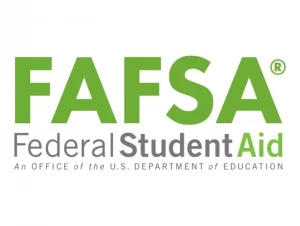KJAN News can be heard at five minutes after every hour right after Fox News 24 hours a day!
Keep up-to-date with Fox News Radio, Radio Iowa, Brownfield & the Iowa Agribusiness Networks!

KJAN News can be heard at five minutes after every hour right after Fox News 24 hours a day!
Keep up-to-date with Fox News Radio, Radio Iowa, Brownfield & the Iowa Agribusiness Networks!
(Radio Iowa) – The State of Iowa will be launching incentives to try to encourage more Iowans to complete the training to become certified shorthand court reporters. “The number of court reporters is shrinking to critical levels,” Representative Brian Lohse of Bondurant said, “and their service to the judicial process is vital.” About 25% of court reporter positions in Iowa’s judicial system are vacant. Lohse, who is an attorney, said the cost of training to be a certified shorthand reporter is a major barrier.
“A court reporter in school faces costs upwards of $2500 just for the equipment and software needed to be trained,” Lohse saud. “Once they are trained and get licensed, the court reporter has to buy all new equipment and software and the cost of that can exceed $10,000.”

State Rep. Brian Lohse (R-Bondurant) was flood manager of the bill that created the court reporter incentive program. (Official Photo)
A state law that passed the legislature unanimously and took effect July 1 contains $100,000 for grants and forgivable loans for newly licensed court reporters. “In order for the loan to be forgiven, the court reporter must live in Iowa and work as a court reporter for at least five years,” Lohse said during House debate of the bill.
Court reporters use steno machines that type syllables instead of letters, so they can type well over 200 words a minute. While some trials are recorded, judges rely on court reporters to immediately be able to read back testimony when questions are raised during court proceedings. Last November, in an effort to expand the number of court reporters in Iowa, the state Supreme Court changed administrative guidelines to let certified voice writers work in Iowa courtrooms. Voice writers speak into a microphone inside a mask, repeating what’s said in court, and the dialogue is converted into text.
(Radio Iowa) – All of the buildings at the Sioux City Railroad Museum were flooded when the Big Sioux River went over a levee in the city’s Riverside neighborhood. That includes the Holocaust Rails exhibit which debuted in April of 2023 with photos and items from the Holocaust of World War Two. One of the exhibits designers, Lou Ann Linblade, says they tried to take steps to protect it. “We went out on Sunday ahead of the flooding to try to raise as much stuff up as we could and we really believe that we were taking things out of harm’s way raising them three feet off the ground. As it turned out that wasn’t enough,” Linblade says. She says their work did help minimize some of the damage.
“We really didn’t lose any irreplaceable artifacts from the era, we were able to take all of the small items that were in display cases and remove those,” She says. “There’s some certainly some damage, and as things dry out, there might be more damage evident, but at this time it looks like things will be able to be put back together quite similarly.” Linblade says the flooding has been tough on those who spent so much time getting the exhibit ready.

Flooded exhibit at the Sioux City Railroad Museum. (KSCJ photo)
“The heart wrenching feeling of seeing that railroad yard covered in water on Sunday evening. And knowing that there was water running through the Roundhouse was just heartbreaking,” She says. “It just flooded back all the memories of putting it together in the blood sweat and tears over the last two years of getting it to the place where we were very happy with it.” Linblade says they are determined to restore the exhibit and anyone can donate to help.
“They can go to toleranceweek.org, and there’s a Donate button at the top of the page. They can mail a donation in care of myself at Sioux City gifts 91922 Pierce Street, they can call with a credit card and all of the money from donations that we receive and in the near future we’ll go completely towards the restoration of the exhibit,” she says. The Railroad Museum will be closed for now as they work to clean up and repair the flood damage.
(Harlan, Iowa) – The Shelby County Board of Supervisors have passed a resolution establishing a County Compensation Board. The Compensation Board will consist of seven members – all residents of Shelby County – including two members appointed by the Board of Supervisors, and one member each appointed by the County Auditor, Attorney, Recorder, Treasurer, and Sheriff.
The Sheriff, Auditor, and Supervisors’ representatives will serve an initial term of four years, while the Treasurer, Recorder, and County Attorney’s representatives will serve an initial term of two years.
Members of the Compensation board cannot hold positions such as state officers or employees of any political subdivision, and they will serve staggered terms, the duration of which were initially determined by drawing lots.
Elected officials in Shelby County are required to submit their respective appointments to the Board of Supervisors by August 1st, 2024. The resolution is retroactively to July 1st, 2024.
(Valentine, NE) – Multiple media outlets report a man from Arkansas was arrested Wednesday in connection with a fatal, hit-and-run bicycling event that left a Pottawattamie County (IA) man dead. 35-year-old Adam Earl Joe Cooper, of Arkansas, is charged with felony motor vehicle homicide and leaving the scene of accident, in the death of 82-year-old Larry Lynn Covalciuc, from Council Bluffs.
Authorities say Covalciuc was participating in the June 25-30 Tour de Nebraska 350-mile bike ride across Nebraska. His body was found laying on the north shoulder of Highway 20, west of Valentine, NE, the morning of June 29th.
(Creston, Iowa) – The Creston Police Department reports two people were arrested on separate charges Thursday morning. At around 12:20-a.m., 22-year-old Cole Thomas Brown, of Villisca, was arrested at 408 S. Sumner Avenue, on a charge of Driving While Suspended. Brown was cited and released on a promise to appear in court.
And, at around 3:30-a.m. Thursday, 32-year-old Kati Lin Peterson, of Creston, was arrested at 302 N. Pine Street, on a charge of OWI/1st offense. Peterson was taken to the Union County Jail and posted a $1,000 bond before being released.
(Des Moines, Iowa) – As Iowa colleges and universities receive the last of the federal student aid applications for the upcoming school year, financial aid officials are seeing fewer students submit their documents and changes in how much those who do file receive. The Iowa Capital Dispatch reports Iowa’s completion rate of the Free Application for Federal Student Aid (FAFSA) is on par with the national average, but for individual colleges those numbers are more extreme. Almost 1.9 million students had filed the FAFSA by June 21, according to the National College Attainment Network, or just over 45% of the total high school class of 2024. This is an 11.8% drop from 2023. Iowa is firmly in the middle of the pack for rates of FAFSA completion, according to the network, with 43.8% of high school seniors having submitted the form by June 21. The rate of completion dropped by 11.7% from last year, or from 18,493 submitted applications to 16,039.
At Luther College in Decorah, financial aid director Rachel Moser said rates of first-year students submitting FAFSAs is 18% behind where it was this time last year, and there’s been a decrease of 15% in continuing students’ FAFSA submissions as well. Just days before the Iowa FAFSA deadline hit on July 1, Moser said the financial aid department was trying to contact people and encourage them to get their forms filed. Drake University Financial Aid Director Ryan Zantingh said his staff was also reaching out to students ahead of the deadline, especially those who might qualify for the Iowa Tuition Grant.
In June 2023, Drake had admitted 4,508 students. Despite seeing an increase in admitted students by more than 1,000 by mid-June this year, which Zantingh said is among the university’s largest-ever admitted student populations, Drake has received 237 fewer FAFSAs from admitted students compared to last year. These admission numbers exclude international students, who do not fill out the FAFSA. He said that in total, the filing rate for admitted students is down around 15% compared to previous years. 
The new FAFSA has given both families and universities grief since its soft launch at the end of 2023, two months later than it rolled out in previous years. Students struggled with accessing the form early on and trying to understand sometimes confusing language and changes to the aid formula and what they needed to include for accurate calculations. Glitches and inaccurate data caused delays in getting forms to schools, many of which then had to be sent back to be corrected.
Colleges are still seeing bugs in the system and cannot make batch corrections on FAFSA forms, slowing down the process to get students accurate financial aid information even more. Changes were also made to the FAFSA to exclude the number of additional family members in college and to include the value of family farms and businesses as assets, impacting the aid some continuing students have been receiving.
Analysis from Iowa College Aid projected that the number of students eligible for Iowa Tuition Grants would increase by a net 2%, with the number becoming eligible going up by 8% and the number no longer eligible going up by 6%. Most of the students losing eligibility could attribute that to no longer being able to consider other family members in college.
Financial aid officials say they’re hoping for a smoother time next FAFSA cycle. They expect the form to be out earlier, as Federal Student Aid is committed to having it out on Oct. 1st.
(Atlantic, Iowa) – Here’s a reminder about an upcoming meeting in Atlantic, Monday, with regards to a thinning deer population in the region. Iowa DNR State Deer Biologist Jace Elliott says the presentation takes place from 6:30- until 8-p.m., Monday, July 8th, at the Venue in downtown Atlantic.
Other meetings are being held next week, in Denison, Council Bluffs, and Shenandoah. Elliott says the deer population degradation is not specific to any one county. It’s occurring throughout western Iowa.
He says discussions will be held in eight locations altogether. The week of July 15th, meetings will be held in Onawa Sioux Center, Sioux City, and Cherokee. Jace Elliott says the discussions will be tailored to the region.
He says you don’t need to bring any materials with you to the meetings. You ARE encouraged to bring your fellow hunters along with you, or at least let them know about the sessions, because input from hunters is needed to determine how the DNR should proceed with helping the deer herd to recover.
The results of questionnaires available at each meeting will be published once all the meetings are completed. He says they have a lot of data to put what’s happened, in context.
 Elliott says they’ve made “some pretty drastic changes over the last three-years in southwest and west central Iowa, in terms of reducing county anterless tags and other regulations,” in an attempt to turn around the downward deer population trend. He says the DNR is confident they can revitalize the deer population in a few short years.
Elliott says they’ve made “some pretty drastic changes over the last three-years in southwest and west central Iowa, in terms of reducing county anterless tags and other regulations,” in an attempt to turn around the downward deer population trend. He says the DNR is confident they can revitalize the deer population in a few short years.
Elliott said deer harvest practices that have taken place from the mid-2000’s on, is the main factor which has resulted in the current reduced deer population, but there are other factors as well. “Deer hunting, he says, “is one of Iowa’s most recreationally and economically important traditions. Our goal is to manage deer numbers at a level that is acceptable to our citizens and that supports a quality hunting experience.”
See the schedule below for information on other meeting dates, times and locations. All meetings run from 6:30-until 8-p.m.
(Radio Iowa) – If you’ve ever had a hankering to taste Iowa-fried cicadas, you’ll have your chance later this summer. Ginny Mitchell, education program coordinator at the Iowa State University Insect Zoo, says one popular element of their annual “Insect Village” event next month is edible insects. Mitchell recently collected hundreds of the 13- and 17-year cicadas which she plans to air-fry, sprinkle with seasoning, and serve to visitors on the Ames campus. “Entomophagy, or the eating of insects, is something that has been around since the beginning of humankind,” Mitchell says. “In most countries, the population there eats insects as a daily part of their diet. It’s no different than us going to get some chicken nuggets or making popcorn for a snack.” Are insects “meat”?
The issue of eating insects is subject of debate among vegetarians. Those who refuse to eat meat because of environmental reasons see the very small impact raising and eating insects has on the planet, so they may choose to consider insects as -not- meat, while other more strict vegans disagree. Whatever you call it, Mitchell says making a meal of insects can be extremely healthy. “Insects are a complete amino acid, which means it has all the amino acids that your body needs,” Mitchell says. “They’re also full of protein. There’s way more protein in insects than there is in any of the meat sources that Americans typically eat. Also, it’s full of calcium, which is important.” While many of us may be hesitant to put an air-fried cicada in our mouths, no matter what sauce is on top, others are more adventurous.
Mitchell has been studying — and eating — all sorts of insects for years and will plan to plate up a variety of cicada delicacies during the August event. “I’ll be cooking both the adults and the nymphs, and this is important because once an adult emerges, its exoskeleton is really hard and they’ve got those long wings,” Mitchell says. “Some people might not find those as appetizing as the nymphs, which are a softer-bodied insect and they also don’t have wings.” In the past month or so, two broods of cicadas emerged in eastern Iowa (and across the Midwest) that had been slumbering underground 13 and 17 years. That simultaneous emergence only happens once every 220 years, so Mitchell took a four-day road trip to bag up hundreds of specimens of the six-legged creatures.
“People all over the country are cooking cicadas and eating them,” she says. “There’s several breweries in Illinois that are brewing beer with cicadas. There’s also a fancy restaurant in Illinois that’s made ice cream with the cicadas.” Others are using cicadas in tomato sauce over pasta, or even as a pizza topping. I-S-U’s Insect Zoo will hold its Insect Village event on the Ames campus on Saturday, August 24th. In addition to the edible insects, there will be a Bug Costume Contest and more than 150 species of living arthropods on display, with many available for hands-on inspection.
On the web at https://www.ent.iastate.edu/insectzoo/
(Radio Iowa) – Some changes are coming to the Iowa Alcoholic Beverages Division (ABD) and Department of Revenue websites as part of the state reorganizations. Department of Revenue director, Mary Mosiman says the change brings both together. “As of July 9th, the Department of Revenue and the Alcoholic Beverage Division websites will unite under the revenue.iowa.gov website,” she says. Mosiman says this has been happening with all state government agencies. “It’s called the Digital Transformation Project. It’s an effort to make sure that all Iowans are effectively getting to where they need to be and that we’re all under a unified standardized website so all the services are right where they need them to be for doing business in Iowa,” she says.

Department of Revenue Director, Mary Mosiman. (Radio Iowa photo)
The Iowa Lottery is now also under the Department of Revenue, but she says their website won’t be changing. “Largely because of the branding and the unique use that the Lottery website has of their vendors and of their lottery players,” Mosiman says. Once the changeover is complete, you can find all the information you need from A-B-D or the Department of Revenue at the one site. “One visit to an entity that has a tax and an alcohol issue versus two separate visits. So we know we’re being more effective with our personnel in that regard. We’re hopeful that the people, the external stakeholders, our taxpayers, and our usersof the alcohol licenses, that they to find it to be more effective for them,” Mosiman says.
Mosiman says the transition to bring the Iowa Lottery and the A-B-D under the Department of Revenue has gone smoothly.
(Radio Iowa) – An administrator from the now-closed Glenwood Resource Center is transferring to a role at the state-run facility in Woodward that cares for Iowans with intellectual and developmental disabilities. Two federal investigations raised concerns about how residents with serious disabilities at Glenwood were being cared for and the home was closed last month.
Iowa Department of Health and Human Services director Kelly Garcia says the person she hired to stabilize medical care at Glenwood is transferring to the Woodward Resource Center. “We did finally land a physician who was the medical director out at Glenwood,” Garcia says. “We did that through a very unique arrangement with the University of Iowa Hospitals and Clinics, so he’s on faculty there. He works for them. We pay his salary and he’ll be moving to Woodward to assist us in lifting up the Center of Excellence.”
Garcia says the goal of the center is to have some Woodward staff help direct care providers elsewhere figure out what works best for a patient with high needs. “Or maybe an individual needs to come from some respite or short term crisis stabilization or to work on some of their skills and then that team will go out into the community and support that work with that community provider,” Garcia says, “What we’ve recognized through this transition is providers can’t do it alone. We shouldn’t expect them to. That was a space we were missing in Iowa, but we’re doing it today.”
Woodward, like Glenwood, has provided intensive services for Iowans with profound disabilities for more than a century. Garcia says the Woodward patients are not permanent residents, as was the practice at Glenwood. “It might be six weeks, it might be six months, it might be six years,” Garcia says, “but the goal would be to stabilize that individual, to understand them (and) what they need to be successful and then to work on a transition plan to a lower level of care, which in this case would be a community setting.”
Garcia says the Woodward Resource Center is centrally located and her plan is for it to be a hub of expertise for private or non-profit facilities that care for Iowans with
disabilities.